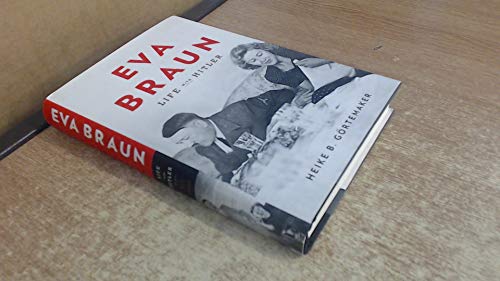Articles liés à Eva Braun: Life With Hitler

Synopsis
DAILY TELEGRAPH BOOKS OF THE YEAR and BBC HISTORY MAGAZINE BOOK CLUB title
'I want to be a beautiful corpse, I will take poison' Eva Braun, 1945
Eva Braun and Adolf Hitler were together for fourteen years, a relationship that ended only with their marriage and double suicide in Berlin. Braun was obsessed with sport, fashion, photography and films, and seems to have had no real interest in politics. She and Hitler were unmarried and they had no children. And so, at the heart of the Nazi regime there was an odd paradox: the leader of a ferocious dictatorship, himself obsessed with imposing an idea of the 'German family' on an entire nation, who chose to spend much of his adult life with a woman 23 years younger than himself in a way that was unideological and bohemian.
So who was Eva Braun? Heike Görtemaker's highly praised new book is the first to take Braun's role in the Nazi hierarchy seriously. It uses her to throw fascinating light on a regime that prided itself on its harsh, coherent and unsentimental ideology, but which was in practice a chaos of competing individuals fighting for space around the overwhelmingly dominant figure of Hitler. Braun had a special place 'at court'. She was both marginal and exceptional: a more powerful figure than 'the First Ladies of the Third Reich' such as Magda Goebbels and Margarete Speer, but someone who almost never chose to use that power.
Braun's life tells us a huge amount about a particular, catastrophic era in German history, both in her role as Hitler's companion and as the hostess at Nazi social events at the Berghof. Heike Görtemaker's book allows Braun to step out as much as possible from the shadows and fully inhabit her strange role at the heart of a terrible regime.
Les informations fournies dans la section « Synopsis » peuvent faire référence à une autre édition de ce titre.
À propos de l?auteur
Heike Görtemaker is a German historian and author. She was born in 1964, and studied Economics and German literature. She is currently working on a project on the legacy of Hitler's inner circle in post-war Germany.
Les informations fournies dans la section « A propos du livre » peuvent faire référence à une autre édition de ce titre.
Acheter D'occasion
état : Assez bonEUR 13,92 expédition depuis Royaume-Uni vers France
Destinations, frais et délaisRésultats de recherche pour Eva Braun: Life With Hitler
Eva Braun: Life with Hitler
Vendeur : Roger Lucas Booksellers, Horncastle, Royaume-Uni
Hard Cover. Etat : Very Good. Etat de la jaquette : Very Good. Reprint. Reprint, 8vo, 324pp, photo illustrations, previous owner 's embossed ownership stamp to corner of the ffep VG+ Copy in VG+ DJ Size: 8vo - over 7¾" - 9¾" tall. N° de réf. du vendeur 50047
Quantité disponible : 1 disponible(s)
Eva Braun: Life With Hitler
Vendeur : best books, St. Leonards on sea, Royaume-Uni
Hardcover. Etat : Very Good. Etat de la jaquette : Very Good. German warfare / WWII. N° de réf. du vendeur 025471
Quantité disponible : 1 disponible(s)
Eva Braun. Life With Hitler
Vendeur : Libro Co. Italia Srl, San Casciano Val di Pesa, FI, Italie
Cartonato. Etat : fine. London, 2011; cartonato, pp. 324, cm 16,5x24,5. Libro. N° de réf. du vendeur 2355699
Quantité disponible : 1 disponible(s)
Eva Braun: Life with Hitler
Vendeur : The Book Cellar, LLC, Nashua, NH, Etats-Unis
hardcover. Etat : Good. Has moderate shelf wear, highlighting, underlining and/or writing. Great used condition. A portion of your purchase of this book will be donated to non-profit organizations.Over 1,000,000 satisfied customers since 1997! Choose expedited shipping (if available) for much faster delivery. Delivery confirmation on all US orders. N° de réf. du vendeur 10777859
Quantité disponible : 1 disponible(s)

